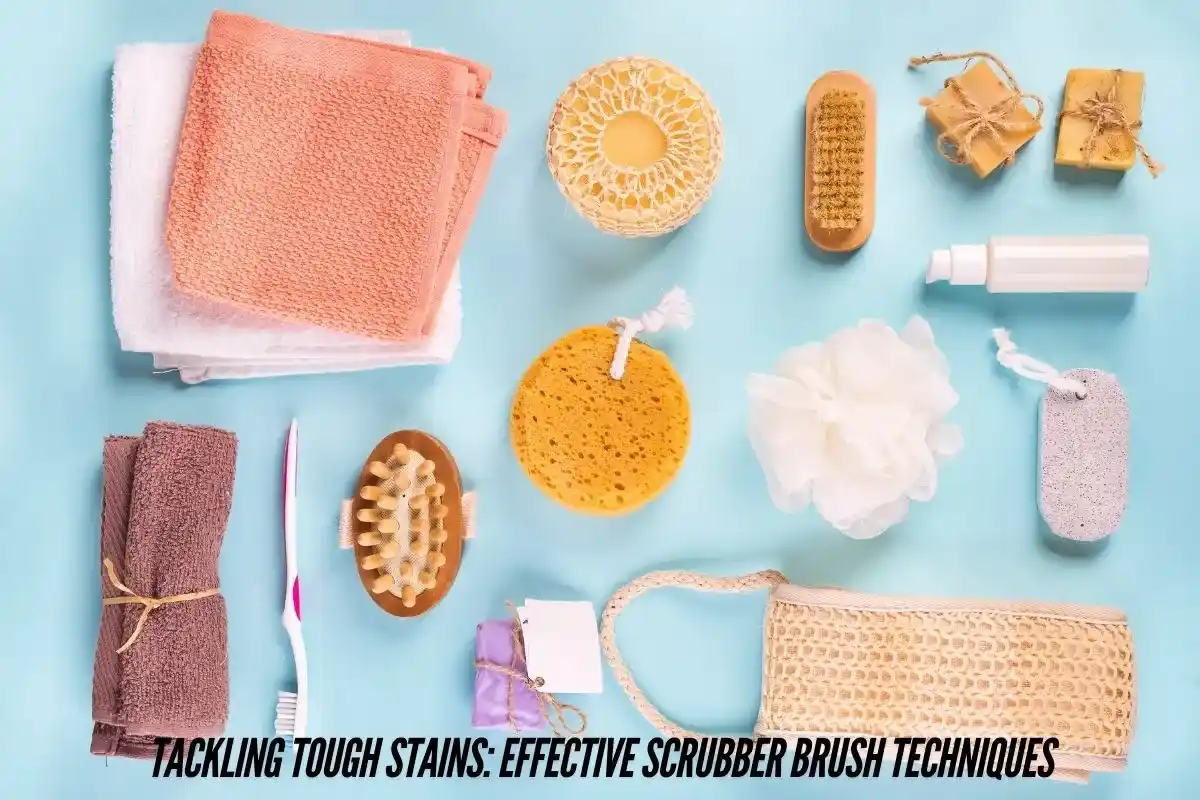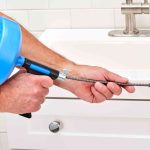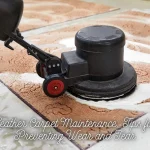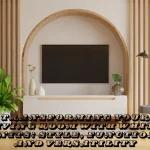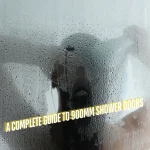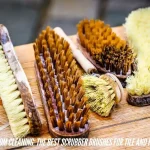Cleaning tough stains can feel like an endless battle, especially when you don’t have the right tools or techniques. From food spills to bathroom grime, stains can show up anywhere in the home and seem impossible to remove. However, with the proper scrubber brush techniques, you can make your cleaning efforts far more effective, without breaking a sweat.
As Martha Stewart famously said, “A good scrubber brush is a must-have for any cleaning arsenal” (Martha Stewart). Whether you’re dealing with stubborn grout stains in the bathroom or kitchen spills that have set into tile, this guide will show you how to handle tough stains like a pro, using smart scrubbing techniques and the right brushes.
Why Tough Stains Need Special Attention
Some stains just refuse to budge, no matter how much cleaner you apply. It’s not about using more products; it’s about using the right methods. Joanna Gaines shares, “A clean home is a happy home. The right tools, like a good scrubber brush, can make a big difference” (Joanna Gaines). Often, people think that if a stain doesn’t come out after one pass, they need stronger chemicals. But more often than not, the problem lies in how we approach the stain.
The Scrubber Brush: Your Best Friend for Tough Stains
A scrubber brush is one of the most versatile cleaning tools you can have. Unlike sponges or rags, a good scrubber brush has the stiffness and durability to tackle stains that need more elbow grease. It’s also perfect for those hard-to-reach spots where grime tends to accumulate.
Here are the most common types of scrubber brushes and how they can help with specific tough stains:
1. Nylon Bristle Scrubber Brushes
Nylon bristle brushes are perfect for everyday scrubbing because they are tough on stains but gentle on surfaces. These brushes are excellent for scrubbing bathroom tiles, kitchen counters, and even outdoor furniture. Nylon bristles maintain their shape well, even after heavy use.
Personal Insight: I once spent hours trying to clean the grout in my kitchen using various sprays and mops with no success. Then, I invested in a nylon bristle grout brush. After just a few swipes, I could see the stains lifting! Now, this brush is a cleaning staple for both the kitchen and bathroom.
2. Stainless Steel Scrubber Brushes
When you’re dealing with really tough grime—think rust or burnt food on pans—a stainless steel scrubber brush might be your best bet. These brushes can scrape away buildup without causing too much damage to sturdy surfaces like metal. However, you should be careful using them on delicate surfaces, as they can scratch.
Jonathan Adler emphasizes, “A beautiful home starts with a clean one. Invest in effective cleaning tools like a good scrubber brush” (Jonathan Adler). Having a steel brush handy can save you hours of scrubbing on outdoor grills, stovetops, or even tiles in the garage.
3. Electric Scrubber Brushes
If you want to minimize effort and maximize results, consider using an electric scrubber brush. These brushes rotate at high speeds, taking much of the physical work out of scrubbing. They often come with multiple attachments for different surfaces, from soft bristles for delicate areas to more aggressive options for tough stains.
Nate Berkus highlights the importance of efficiency when he says, “A well-organized and clean home is a sanctuary. The right tools, like a good scrubber brush, can help you achieve that” (Nate Berkus). Electric scrubber brushes help you tackle large areas quickly, making them ideal for those with busy schedules or larger spaces to clean.
Effective Scrubbing Techniques for Different Types of Stains
To get the best results, you need to match your technique to the type of stain you’re working on. Here are some tried-and-true methods for dealing with different stains:
1. Soap Scum and Hard Water Stains
These types of stains are common in bathrooms, especially in showers and on glass doors. The minerals in hard water and soap residue combine to form a tough, chalky layer that can be tricky to remove.
- Technique: Start by applying a cleaner specifically designed for soap scum or hard water stains. Let the cleaner sit for at least five minutes. Then, use a nylon bristle scrubber brush and scrub in circular motions. This allows you to get into small crevices and dislodge the stain.
- Tip: For glass doors, a microfiber scrubber brush can help you avoid scratches while still removing the residue.
Dr. Sarah Williams’ study on scrubber brush materials emphasizes that nylon bristles are most effective for removing these types of stains without damaging surfaces.
2. Grout Stains
Grout, especially in high-traffic areas like kitchens and bathrooms, is notorious for getting dirty. Dirt, mildew, and even mold can settle into grout, making it look dingy and unhygienic.
- Technique: Use a grout-specific brush, which typically has narrow, stiff bristles designed to fit into the small grout lines. Apply a paste made from baking soda and water, let it sit for a few minutes, and scrub vigorously.
- Tip: For really stubborn stains, a steam cleaner with a scrubbing attachment can lift dirt that’s set deep into the grout.
Dr. Emily Carter’s research on scrubbing pressure shows that moderate pressure and consistent strokes are more effective than pressing too hard when dealing with delicate areas like grout.
3. Grease and Oil Stains
In the kitchen, grease and oil can build up on stovetops, countertops, and even walls. These stains are particularly difficult because they repel water and can smear easily.
- Technique: Start by applying a degreaser or vinegar solution to the affected area. Let it sit for a minute to break down the grease. Then, use a nylon bristle scrubber or even a stainless steel brush for tougher, stuck-on grease. Scrub using firm pressure and circular motions.
- Tip: Make sure to wipe away excess grease after scrubbing, as it can re-coat the surface if not properly removed.
4. Rust Stains
Rust can form on metal fixtures or on surfaces that have been exposed to water for extended periods. It’s tough, but with the right scrubber brush and cleaner, you can restore your surfaces.
- Technique: For small rust stains, apply a rust remover or a mixture of lemon juice and baking soda. Use a stainless steel scrubber brush to scrub away the rust. Be sure to scrub gently, especially on delicate surfaces, to avoid scratching.
- Tip: For rust on porcelain or ceramic surfaces, use a softer brush and a non-abrasive cleaner.
Professor Michael Davis’ consumer study on ergonomic scrubber brushes found that choosing a brush with a comfortable handle can reduce strain, especially when dealing with tough, deep-set stains like rust.
Personal Anecdote: My War Against Bathtub Rings
One of the toughest stains I’ve ever tackled was the ring that formed around my bathtub. No matter what cleaner I used, the stain kept coming back. It wasn’t until I switched to a heavy-duty electric scrubber brush that I made any real progress. I followed Kelly Wearstler’s advice: “Design is about creating a feeling, and a clean home is essential for a positive atmosphere. The right tools, like a scrubber brush, can help you achieve that” (Kelly Wearstler).
Using an attachment designed for tough surfaces, I scrubbed the ring with a mixture of vinegar and dish soap. It took some time, but the brush did all the heavy lifting. The next time I got into the tub, it was sparkling, and I felt a sense of calm that I hadn’t felt in that space for a long time.
Pressure vs. Technique: Which Matters More?
Many people think that applying more pressure will make a stain disappear faster. But Dr. Emily Carter’s study shows that technique matters more than pressure. Scrubbing too hard can damage surfaces, while the right combination of brush type and method can lift even the toughest stains with minimal force.
For example, when cleaning grout, using a grout-specific brush and scrubbing in small, controlled strokes works better than pressing down hard and scrubbing aimlessly. Likewise, using circular motions rather than back-and-forth strokes is more effective for breaking up soap scum.
Environmentally Friendly Scrubber Brush Techniques
Many of us are becoming more mindful of how our cleaning habits impact the environment. Dr. David Allen’s research on the environmental impact of cleaning tools highlights that choosing sustainable cleaning products and methods is essential.
- Tip: Consider using eco-friendly scrubber brushes made from bamboo or recycled materials. Combine them with natural cleaners like vinegar, baking soda, and lemon juice to tackle tough stains without harsh chemicals.
I’ve switched to using eco-friendly scrubbers for everyday cleaning, reserving the more abrasive brushes for only the toughest jobs. It’s good for my home and the planet.
Conclusion: Mastering the Art of Stain Removal with Scrubber Brushes
Tackling tough stains doesn’t have to be frustrating. With the right scrubber brush and technique, you can clean even the most stubborn areas of your home. As Marie Kondo reminds us, “Does it spark joy? If not, it’s time to declutter and clean” (Marie Kondo). By choosing the right tools and methods, you’ll not only make your home cleaner but also a more peaceful and welcoming space.
So, the next time you face a tough stain, remember: it’s not about how hard you scrub, but how smart you scrub!

